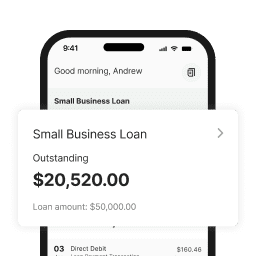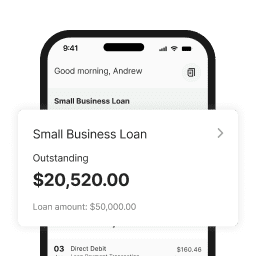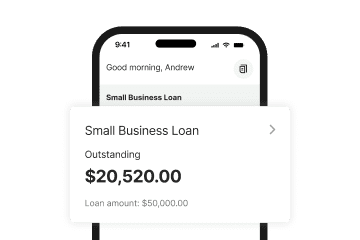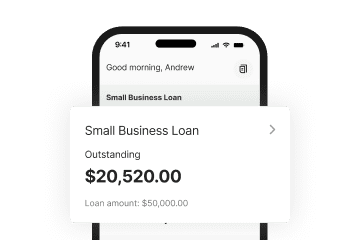At a glance
- Cash flow forecasting helps you plan ahead, avoid shortfalls and make informed decisions about your business finances.
- A good forecast includes your expected income, expenses and tax obligations, and should be updated regularly.
- Use the free downloadable template and advice from chartered accountant James Scott to get started.
It’s the middle of the month, and your invoices haven’t been paid. Payroll is due next week, and a supplier has just sent through a large, unexpected bill. Your business is profitable on paper, but suddenly you’re scrambling to cover costs.
This is a common scenario for small business owners who don’t regularly forecast their cash flow. Without a clear view of what’s coming in and going out, it’s easy to get caught off guard — even when sales are strong.
In this article, we’ll walk you through how to forecast cash flow for your small business so you can plan ahead, avoid shortfalls and make smarter financial decisions. You’ll also find a free downloadable template, plus expert tips from chartered accountant James Scott of JD Scott + Co to help you build a forecast that works in the real world.
What a cash flow forecast can do for your business
A cash flow forecast gives you a clearer picture of how money moves through your business. It helps you plan for slower months, prepare for large expenses and make better decisions about when to invest, hire or hold off. For many small businesses, it’s also an essential tool when applying for finance or speaking with investors.
The cost of poor cash flow forecasting
Without a clear view of your cash flow, it’s easy for small issues to build up and impact your day-to-day operations:
- Unexpected shortfalls can make it hard to pay staff, suppliers or rent on time
- You might need to dip into personal savings to stay on top of expenses.
- Opportunities for growth — like buying stock in bulk or launching a new product — can pass you by
- Delayed payments can strain relationships with key suppliers and partners
- Without a clear forecast, it’s difficult to understand where your money is going or why you’re constantly feeling stretched, even when sales are strong
A simple cash flow forecast can help you avoid these challenges and give you the confidence to make better decisions for your business.
Looking for more ways to boost your business’s cash position? Don’t miss these eCommerce strategies to improve cash flow.
How to forecast cash flow for your small business
Forecasting your cash flow doesn’t need to be complex. At its core, it’s about listing the money you expect to come in and go out of your business over a set period — typically monthly or weekly — so you can predict your cash position ahead of time.
Here’s how to build a basic cash flow forecast:
- Choose your forecasting period. Start with the next three to six months. For fast-moving businesses or those with variable income, a weekly forecast might give more control.
- Estimate your incoming cash. Include all sources of income such as sales, customer payments, grants or investment. Make sure to factor in the expected payment dates, not just the invoice dates.
- List your outgoing cash. These are your expenses: rent, wages, inventory, loan repayments, utilities, subscriptions and more. Don’t forget tax obligations like GST, PAYG and income tax, which can make up a significant portion of your outgoings.
- Calculate your net cash flow. Subtract your total outgoings from your total income to see if you’re expecting a surplus or a shortfall. Then check if your cash balance is sufficient to get you through that period.
- Update regularly. A forecast is a living document. Update it as your circumstances change — especially if customers delay payments, unexpected expenses pop up, or sales increase.
Expert tip from chartered accountant James Scott of JD Scott + Co:
“Your cash flow forecast isn’t a crystal ball. It’s a guide. Business is unpredictable, so it’s wise to leave a buffer. A good rule of thumb is to have at least three months’ worth of expenses on hand.”
Using the free cash flow forecast template
We’ve included a downloadable Excel template to help you get started. It’s based on the same format accountants use with small business clients and helps you track revenue, direct costs and operating expenses across a 12-month period.
To use it:
- Input your expected monthly revenue at the top
- Add your direct and operating expenses further down
- Include tax payments and any other regular costs
- Review your net position each month to spot dips in advance
Don’t forget tax!
“GST, PAYG and income tax can add up quickly. For a typical SME with several employees, they can account for up to 20% of incoming cash flow. These payments are often due monthly or quarterly and can be easy to overlook,” says Scott.
He recommends setting aside funds for tax in a separate bank account, either daily or weekly, to avoid surprises when BAS time rolls around.
If you’re looking for more ways to improve your incoming cash flow, here are 7 ways to get paid faster.
Common forecasting pitfalls to avoid
A forecast is only useful if it reflects what’s really happening in your business. Here are some of the most common mistakes that trip up small business owners — and how to avoid them:
- Underestimating expenses. It’s easy to overlook irregular or once-a-quarter costs like insurance, tax payments or equipment maintenance. Make sure to include every expected outflow, even if it doesn’t happen monthly.
- Forgetting about tax. It’s not just about including GST, PAYG and income tax in your forecast, it’s also important to factor in the timing of these payments. Monthly or quarterly obligations like BAS can create pressure if they aren’t accounted for in advance.
- Overestimating income. Base your forecast on realistic payment dates, not just when an invoice is sent. If a customer usually pays in 30 days, don’t assume you’ll be paid straight away.
- Not adjusting as things change. Your forecast isn’t a one-and-done task. Update it regularly to reflect new information, like slower sales, unexpected expenses or new opportunities.
- Sticking to spreadsheets when things get complex. Consider switching to forecasting software as your needs grow, especially if you want to test different business scenarios.
Want more ways to protect your cash flow? Don’t miss these 8 costly mistakes SMEs should avoid.
Tools and templates to make forecasting easier
If you’re just starting out, a simple spreadsheet is a great way to get familiar with forecasting. You can
download our free cash flow forecast template to map out your income, expenses and net position over a 12-month period.
But as your business grows, and the complexity of your finances increases, a spreadsheet can start to fall short.
“Cash flow management software can help you plan more accurately. These tools use a three-way forecast that connects your profit and loss, balance sheet and cash flow to give you a fuller picture. They also let you model different scenarios so you can see how changes in your business might impact your cash position,” says Scott.
Some small businesses use tools like Xero, Float or Fathom to automate forecasting and track actuals versus projections. Others stick with spreadsheets but build in regular review points to keep their forecasts up to date.
Whichever approach works best for you, the goal is the same: make cash flow forecasting part of your regular financial rhythm.
What if you had flexible access to funds to cover regular expenses and stabilise your ongoing cash flow? Whether you’re stocking up, catching up, or just keeping things moving, the Prospa Line of Credit gives you the flexibility to manage your day-to-day with cash always at your fingertips.








